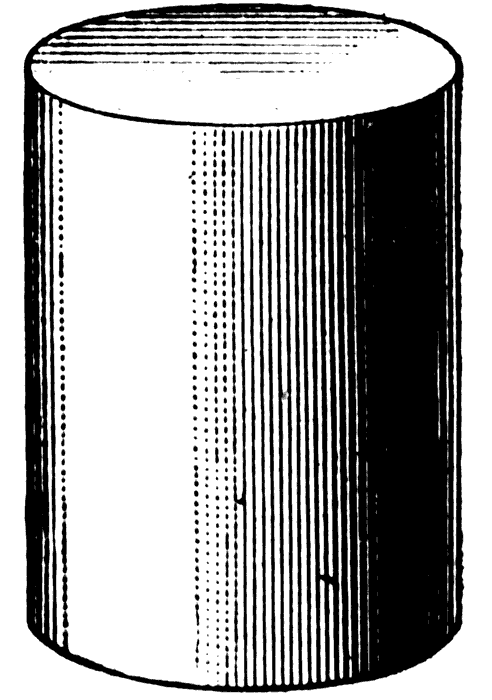 |
American Literature: Romanticism research assignment Student Research Submissions 2016 |
 |
Caryn
Livingston
19
November 2016
Emily
Dickinson’s Yearning: Desire and Loss in Lyric Poetry
From
Poe’s “Ligeia” to Henry James’s Daisy
Miller, the romance narrative and the striving for some goal it denotes has
been a common starting point for class discussions over American Romantic
literature. Desire as an emotional driver has power within all the varied texts
under discussion during the semester, and the resolution of desire has often
left more questions than it has answered. In her text
Dancing in the Dark, Barbara Lazear
Ascher writes, “Romance is structured yearning” (xiii). After desire has been
satisfied, what remains is usually confused listlessness, as in the racially
charged funeral scene in The Last of the
Mohicans, or incomprehensible madness, as in “Ligeia” and “Young Goodman
Brown”—the romantic moment exists in the desiring itself rather than the
achievement of desire. With short stories or novels that are primarily driven by
narrative, this gap between desire and achievement can be unsatisfying, as the
resolution of the narrative threatens the yearning that creates the romantic
tension. However, lyric poetry provides an outlet for exploring the cycle of
desiring and the loss that sustains desire without the necessity of either
attaining the desire or ending with a loss. Emily Dickinson explores this aspect
of Romanticism in her poetry, usually featuring a more concentrated romance
narrative comprised of desire and loss either for love or for a more
transcendent goal, and using the medium of poetry to delve into the
contradictions of longing for an ecstatic moment that is destroyed the instant
it is grasped.
Dickinson’s poems frequently either address or refer to what Joanne Feit Diehl
calls “the masculine erotic ‘other’” in her book
Dickinson and the Romantic Imagination.
This masculine figure “serves a generative function as source and occasion for
her poems; a figure of astounding authority, it is he to whom she owes her
existence” (Diehl 77). Dickinson’s poems featuring this masculine “other” are
filled with the tension that comes with desiring him without the security of
possession. In her poem “Heart! We will forget him!” the speaker looks back on a
love after experiencing its loss; the loss itself only serves to strengthen the
desire for the love and serves, in Diehl’s words, the “generative function” for
the poem. Overcome by the emotion of the poem, the speaker appeals to her
innermost self as a duality of emotional Heart and creative poet: “Heart! We
will forget him! / You and I – tonight!” (1-2). The Romantic force of the poem
is found in the longing the speaker is trying to remove as she remembers the
loss of what she desires: “You may forget the warmth he gave – / I will forget
the light!” (3-4).
However, it is soon evident in this short poem that the speaker’s quest is
impossible. Desire leads the speaker into her loss that fuels her desire anew,
which is evidenced in the poem by the speaker herself who says to her heart,
“When you have done, pray tell me / That I may straight begin!” (5-6). The
speaker here cannot sever her artistic self from her emotional self, and in fact
the loss felt by the emotional self begets the artistic creation of the poem.
Only within the poem can the cycle of desire and loss be contained, because
outside it both are fleeting. In his essay “Sumptuous—Despair,” Roland
Hagenbüchle expands on how the loss functions in Dickinson’s poem as he writes
“A fundamental lack (or want) pervades much of Dickinson’s œuvre” (1). As the
speaker in the poem is split between the poet and Heart, the poem serves,
according to Hagenbüchle, as an effort to fill the lack within the self of the
poem. “One could indeed argue that Dickinson attempts nothing less than to
analyze and—if possible—to heal and reunify an alienated and fundamentally
flawed subject. Hence, the central importance of the notion of desire in her
work” (Hagenbüchle 1).
Like
Diehl, Hagenbüchle considers how the “other” functions in Dickinson’s poetry as
a means for maintaining desire in her poems. “As long as desire is alive, the
Other is alive, meaning is alive. When desire dies, the Other dies, meaning
dies. The basic tension, then, is that between
stasis and
dynamis, between movement and the
stopping of movement” (3). This movement is the desire / loss cycle itself. One
gives way to the other, as satisfaction comes not from embodying either state
but from the way each state draws the speaker and reader into the next state so
that the yearning is constantly maintained. In her poetry, Dickinson developed a
strategy “that allowed her to place both self and Other in a non-hierarchical
and mutually dynamic relationship. The generative power that sustains this
relationship is called ‘Love’” (Hagenbüchle 6).
Love
that sustains the desire and loss within poetry, and the anxiety of desire that
can never be fulfilled without its own destruction, is the focus of Dickinson’s
poem “I gave myself to Him –” and is brooded over by the poem’s speaker, who
focuses on the desire and loss cycle in an economic sense. In her essay
Emily Dickinson and the Economics of
Desire, Joan Burbick coins the phrase “economics of desire” and proposes
that Dickinson’s analyses of desire employ “economic tropes that ultimately
determine the ‘cost’ of longing” (363). This economic understanding of
Dickinson’s view of desire emerges immediately in the second line of her poem,
when after giving herself to “Him,” she “took Himself, for Pay, / The solemn
contract of a Life / Was ratified, this way –” (2-4). In speaking of desire and
loss through economic terms, Dickinson turns the cycle into a zero-sum game, in
which rather than emotional capital being endless, total loss can be experienced
by the speaker in an emotional realm as easily as in an economic realm.
“Dickinson describes longing in terms of poverty and wealth, loss and gain,
producing poems that both mimic and deprecate the mercantilist vision of her
social class” (Burbick 363).
Two of the four economic visions of desire described by Burbick appear in
“I gave myself to Him –.” The first vision “dreams about an extravagant wealth
and joyful consumption of pleasure without regulation: delight becomes an end in
itself, producing nothing other than its own ‘greedy’ enjoyment” (364). This is
exemplified in the way Dickinson ends the poem with this fantasy in the last
stanza:
At least – ’tis Mutual – Risk –
Some – found it – Mutual Gain –
Sweet Debt of Life – Each Night to owe –
Insolvent – every Noon – (13-16)
Here,
the economic investment of the speaker is totally rewarded each night, and the
reward is mutual within the relationship where both partners find they have
“Mutual Gain” in each other (14). This, as evidenced within the same line with a
hopeful “Some – found it,” is the fantasy in which desire might be perpetuated
continuously. However, anxiety present earlier in the poem demonstrates that
this final stanza is, as Burbick, says a dream for the speaker and more than
what is expected.
The second of Dickinson’s visions of desire is embodied in the rest of
the poem, as Dickinson “ponders the tension of not-having: loss and restraining
promise greater ‘gain’ by deferring possession and, at times, by embracing
asceticism” (Burbick 364). Anxiety arises in the second stanza, when the speaker
worries, “The Wealth might disappoint – / Myself a poorer prove / Than this
great Purchaser suspect” (5-7). When the desire is realized, the value of the
desired object is put to the test and may be left wanting—a realization that
positions the permanent state of desire as potentially preferable because it
keeps alive the hope of the final stanza, in which delight is continually
renewed. There is a benefit to longing for a goal that is never achieved because
the desired object remains a distant ideal, which Dickinson again frames as an
economic issue in the third stanza when she writes that the daily reality of
loving in life may drain the desire from love, “But till the Merchant buy – /
Still Fable – in the Isles of Spice – / The subtle Cargoes – lie –” (10-12). The
Romantic ideal is preserved by embracing the desire without realizing it, and
that may be preferable to disappointment in an idealized fantasy. Nevertheless,
the speaker presses on and maintains the balance between her yearning and
potential disappointment: “In the romantic moment, we gather and focus that
yearning in order to connect with something outside ourselves, believing against
all odds that such connection is possible, knowing paradoxically that romance is
born in the space between our reach and our grasp” (Ascher xiii).
The agony of the loss of an ideal, desired goal is explored in another of
Dickinson’s short poems, “For each ecstatic instant.” In this poem, the price of
achieving or possessing the object of desire is the pain either leading up to or
following the moment of possession:
For each ecstatic instant
We must an anguish pay
In keen and quivering ratio
To the ecstasy. (1-4)
Judith Farr explores this pessimistic view taken by Dickinson in her text
The Passion of Emily Dickinson, when
she refers to Dickinson as “a great poet of erotic bereavement” (126). Citing
several personal events in Dickinson’s life including friends’ deaths and a
troubled relationship with her mother, Farr notes that the weakening of a close,
perhaps romantic, friendship when the friend married her brother “cost Dickinson
a great deal. It also gave her much: an experience of privation and sublimation
that became one of her chief poetic themes” (127). That theme is central within
this poem, in which the ecstasy of achieving the longed-for desire is matched by
a loss described in equally ecstatic terms—it is a loss paid “In keen and
quivering ratio” (3), and emphasizes how the desire is sharpened and enhanced by
the loss.
The way loss enhances desire is discussed in Marlon B. Ross’s
The Contours of Masculine Desire.
According to Ross, desire produces a “residue,” which Ross calls “reality,” that
is composed of “civilization, power, work, love, sex, money, guns, books,
poems,” which are part of a “network of tangible and intangible products that
constitutes and enables the production of reality” (8). Components of reality
are not only produced by desire, but are “the fuel that resupplies desire and
enables its continued momentum” (8). In other words, the conversion of the
idealized vision into something less-than, or reality, becomes the fuel that
reignites desire. Rather than call this loss, Ross dubs it “counterdesire, the
continuous attempt to produce products that will satiate and thus halt the
desiring process. Instead of halting desire, these products fuel an endless
cycle of reproductivity” (8). This is evidenced by the very creation of
Dickinson’s poems and the way she uses them to explore pain of loss, again in
economic terms in the second stanza of “For each ecstatic instant.” Achieving
any desire inevitably leads to a loss immediately after the moment of
fulfillment, as each happy hour is followed by “Sharp pittances of years – /
Bitter contested farthings – / And Coffers heaped with Tears!” (6-8)
Another of Dickinson’s poems, “I cannot live with You –” elaborates on
the reasoning behind the premise of the desire / loss cycle in Romanticism. In
this poem Dickinson considers the idea that desire for another person that
becomes almost sublime in the power of its connection and longing cannot be
sustained, due to both the mundane realities of daily life and because desiring
another human to that degree is blasphemous from a Christian perspective. Early
in the poem, the reality of life is an inevitable precursor to expected loss, as
possessing the object of desire alone is enough to detract from the happiness
the speaker anticipates:
I cannot live with You –
It
would be Life –
And
Life is over there –
Behind the Shelf
The
Sexton keeps the Key to – (1-5)
The
desire throughout the poem is never separate from the inevitable, dreaded loss
that follows and stokes the continuation of desire. “In her quest for adequate
expressions of delight, spectres of regulation stalk the poetry. They can appear
at any moment as the frowning mask of the ‘Keeper’ or the ‘Sexton’ who guards
the keys to life” (Burbick 364). The Sexton, who regulates the desire that keeps
the poem’s speaker from fulfillment with the object of that desire, also brings
back the more realistic aspects of the poem that preclude Transcendent
fulfillment of the desire. He is the figure who puts up the “Life” of the
speaker and her beloved, represented in the poem by a cup—a mundane object that
grows tired through use and is “Discarded of the Housewife – / Quaint – or Broke
–” (9-10). While the newness of a love is attractive to the speaker, it is
impossible to maintain it as an ideal object when faced with the realities of
living day in and day out, leading the speaker to remark, “A newer Sevres
pleases – / Old Ones crack –” (11-12).
Apart from the more realism-based obstacle to fulfillment of desire,
honoring a partner as a Romantic ideal is depicted within the poem as
sacrilegious, replacing the divinity of Christian dogma with a divine love of
the idealized object of desire:
Nor could I rise – with You –
Because Your Face
Would
put out Jesus’ –
That
New Grace
Glow
plain – (21-25)
In
this case not only does possessing the love in the poem lead to a loss once it
is no longer an idealized goal, but it leads to a far more dangerous loss of
faith as Christianity loses its value for the speaker. A person cannot replace
the religious ideal, or it would lead to a Romantic damnation apart from the
theological damnation of a potential afterlife because “Where You were not – /
That self – were Hell to Me –” 43-44). This, according to Judith Farr’s
argument, is “an ironic answer to all such blandishments as Christopher
Marlowe’s [“Come live with me and be my love”], and one feels the speaker’s
longing, exasperation, and resignation in each of the lines that follow” (308).
Hell and Heaven lose all meaning within the Romantic cycle of desire and loss,
as they cease to hold their theological symbolism for the speaker and represent
only either nearness to or absence from the loved one. “[Dickinson] recognizes
these circumstances to be disruptive of all harmony, on earth or in the world of
the spirit, and ends her poem with the brilliant paradoxes declaring that
passion never dies” (309).
The
ending of Dickinson’s poem determines that, because the ecstasy of achieving
desire is damning from Dickinson’s Christian perspective, the desire / loss cycle
is sustained in a way that maintains desire permanently. The loss of what can
never be reaffirms the speaker’s desire:
So We
must meet apart –
You
there – I – here –
With
just the Door ajar
That
Oceans are – and Prayer –
And
that White Sustenance –
Despair – (45-50)
In
the poem, the “Door” separating the speaker and her beloved is not closed but is
left “ajar,” though they are otherwise separated. The loss embraced by this
proclamation within the poem sustains the desire, leading to Dickinson’s
paradoxical line “So We must meet apart” (45). Of this poem, Farr argues that
its real power “derives from its carefully reasoned dismissal or forfeiture of
human life with all of its actual visual forms, and from its election of a state
of mind counter to happiness, even—theologically speaking—to salvation: Despair”
(308). In embracing the despair of her separation from her beloved, the “Door”
of their paradoxical, separate connection is maintained, along with the desire
that cannot be realized within the limiting confines of human life.
If “I
cannot live with You –” ends in despair, “Each Life Converges to some Centre –”
as the final poem under consideration in this essay may offer a potential
resolution through transcendence of human life into a more perfect existence
after life. The elements of desire and loss remain the focus of much of the
poem, with desire for resolution found in a Romance narrative opening the poem
as the “Centre” of a person’s life, “Expressed – or still – / Exists in every
Human Nature / A Goal –” (2-4). As in her other poems though, Dickinson
establishes that this goal, “as a Brittle Heaven –” (9), is beyond achieving in
life: “To reach / Were hopeless, as the Rainbow’s Raiment / To touch –” (10-12).
The Romantic ideal is preserved because it cannot be achieved, and the Romance
narrative is never brought to its conclusion in a lifetime. Diehl considers the
ramifications of this in her text, along with how Dickinson’s definition of
poetry is “destructive and magnificent at once. Love builds with poetry to an
overwhelming force, but neither can be subjected to proof, for they exist beyond
the pursuit of certainty” (78-9). The magnificence of this force builds within
the poem in the second stanza, in which Dickinson elaborates on the goal toward
which every life builds:
Embodied scarcely to itself – it may be –
Too
fair
For
Credibility’s presumption
To
mar – (5-8).
Once
again, life intervenes in the Romantic ideal, in which the goal toward which all
life strives can barely be acknowledged as it calls to mind the sublime, or
something superior to what can be understood or grasped in life. As Diehl
writes, “Experiencing either [love or poetry] ensures personal destruction;
having equated love and poetry with God, [Dickinson] asserts that they require
the same complete sacrifice. As one cannot see God and live, one cannot
experience the equal power of love or poetry and expect to survive” (79).
The loss of this experience is not met with despair in this poem,
however, as Transcendentalism offers a potential resolution where, beyond the
frailty of a single human life, we may transcend the limitations of the desire
and loss cycle and our own inability to grasp and possess the ideal. In the
poem, the ideal is “persevered toward” (13) without being achieved in this
lifetime, but through striving during life the speaker holds out hope for a
better outcome once life is transcended. This hope appears in the last stanza:
Ungained – it may be – by a Life’s low Ventures –
But
then –
Eternity enable the endeavoring
Again. (17-20)
It
becomes understandable within Dickinson’s poetry why desire can never be grasped
when depicted in these terms, because by equating the pursuit of an ultimate
desire with a metaphysical understanding of life the desire has become something
divine, mirroring a Christian struggle for connection with God. “Dickinson’s
perception of love and poetry as equivalent to the soul’s confrontation with God
emphasizes the threshold of experience, a moment of liminal awareness when
‘All—is the price of All—” (Diehl 79). Only by surpassing the barriers of
humanity in a metaphysical sense, similar to a Romantic understanding of
Transcendentalism, can a life’s desire be realized.
Dickinson, then, was in agreement with Barbara Lazear Ascher’s
understanding of Romance, as Ascher declared that Romantics are “all bound by
the shared yearning to sense harmony and oneness with the world, the
determination to adhere to a faith that such unity exists and the compulsion to
give that yearning form” (16). Dickinson used that yearning as a catalyst for
the poems considered in this essay, as desire repeatedly gave way to loss
because it is human nature that our desire can never be realized without
becoming corrupted in some way. Still, whether Dickinson’s Romantic poetry ends
with the pain of desire and loss, despair over her resignation to loss, or hope
that eventually she will transcend human limitations that prevent happiness in
reaching the strived-for goal, poetry continued to provide an outlet in which to
express the powerful emotions brought on by grasping at the sublime. As powerful
observations on the nature of human existence, Dickinson’s poems demonstrate how
“we press ahead even as we know that merger and union, that imperishable bliss,
will elude” (Ascher 220).
Works
Cited
Ascher, Barbara Lazear. Dancing in the
Dark: Romance, Yearning, and the Search for the Sublime. HarperCollins,
1999.
Burbick, Joan. “Emily Dickinson and the Economics of Desire.”
American Literature, vol. 58, no. 3,
Oct. 1986, pp. 361-78. JSTOR,
www.jstor.org/stable/2925608.
Dickinson, Emily. “Each Life Converges to some Centre –” Johnson, pp. 337.
---.
“For each ecstatic instant.” Johnson, pp. 58
---.
“Heart! We will forget him!” Johnson, pp. 26.
---.
“I cannot live with You –” Johnson, pp. 317-18.
---.
“I gave myself to him.” Johnson, pp. 283-84.
Diehl, Joanne Feit. Dickinson and the
Romantic Imagination. Princeton UP, 1981.
Farr,
Judith. The Passion of Emily Dickinson.
Harvard UP, 1992.
Hagenbüchle, Roland. “Sumptuous—Despair:” The Function of Desire in Emily
Dickinson’s Poetry.” The Emily Dickinson
Journal, vol. 4, no. 2, Fall 1996, pp. 1-9.
Project Muse,
https://doi.org/10.1353/edj.0.0079.
Johnson, Thomas H., editor. The Complete
Poems of Emily Dickinson. Little Brown, 1960.
Ross,
Marlon B. The Contours of Masculine
Desire: Romanticism and the Rise of Women’s Poetry. Oxford UP, 1989.
![]()
The poems for the essay are linked below, though I used a
written version of Dickinson's collected works. This website has the best
punctuation of the poems I could find online.
https://en.wikisource.org/wiki/Heart!_We_will_forget_him!
https://en.wikisource.org/wiki/I_gave_myself_to_Him_%E2%80%94
https://en.wikisource.org/wiki/For_each_ecstatic_instant
https://en.wikisource.org/wiki/I_cannot_live_with_You_%E2%80%94
https://en.wikisource.org/wiki/Each_Life_Converges_to_some_Centre_%E2%80%94
|
|
|
|


